#lugh dé tuatha
Text
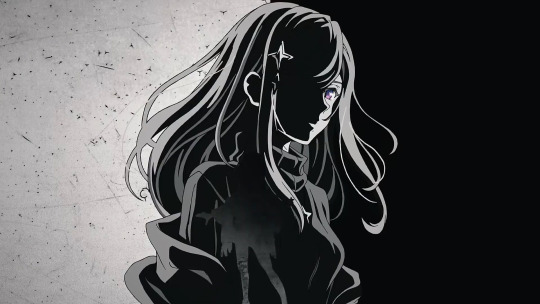


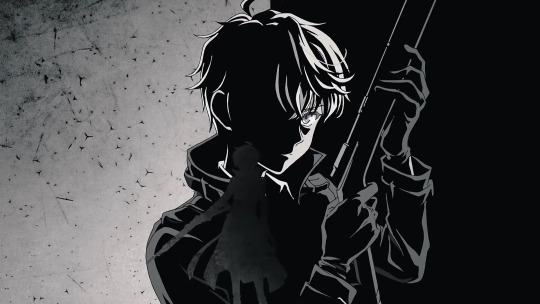
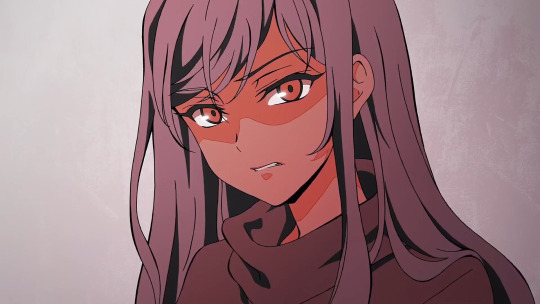













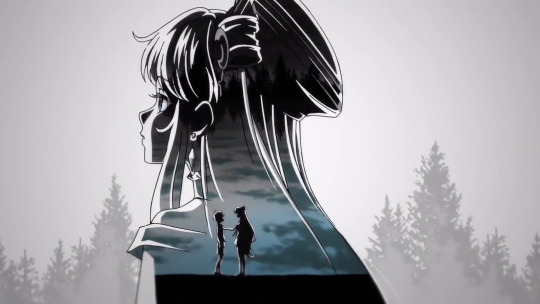

Sekai Saikou no Ansatsusha, Isekai Kizoku ni Tensei suru / World's Finest Assassin OP visuals.
#world's finest assassin#Ansatsu Kizoku#The World's Finest Assassin Gets Reincarnated in Another World as an Aristocrat#lugh dé tuatha#tarte#maha#dia#isekai#light novel#anime opening#anime caps
12 notes
·
View notes
Text

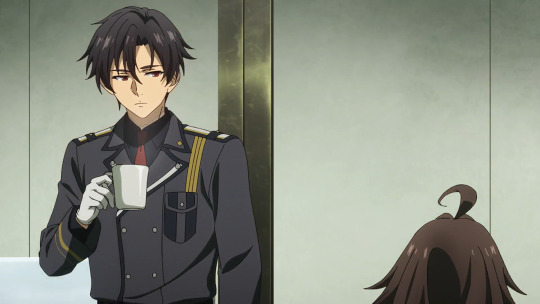



Chads
#kiyotaka ayanokoji#ayanokoji#aqua hoshino#aquamarine hoshino#levi ackerman#captain levi#lugh tuatha de#lugh tuatha dé#shin nouzen#shinei nouzen#attack on titan#86#eighty six#The World's Finest Assassin Gets Reincarnated in Another World as an Aristocrat#the world's greatest assassin#oshi no ko#classroom of the elite#youkoso jitsuryoku shijou shugi no kyoushitsu e#onk
44 notes
·
View notes
Text
There are exactly two reasons why I think that the ancient Irish believed in reincarnation: The first is that there's a decent amount of evidence, including both from native literature and comparatively, including from Classical accounts of the Gauls/parallels with Welsh literature in particular, even though these things can never be 100% certain.
The second is that I just want the Tuatha Dé to get into slapfights that last across multiple lifetimes.
#everyone breathing a sigh of relief when Bres dies only for him to come in with the steel chair accompanied to 'Anti-Hero' by Taylor Swift#the dagda dying and everyone being like 'thank fucking GOD no more dealing with our wives cheating on us with the Dagda'#only for a sudden spurt of illegitimate (or the medieval Irish equivalent) babies popping up nine hundred years later#'well Lugh's dead so at least' 'SURPRISE BITCH'#like death isn't even an ISSUE so much as an INCONVENIENCE#One of the Tuatha Dé dies in the middle of another one scolding them and when they come back the other one continues scolding them#like nothing changed
3 notes
·
View notes
Photo

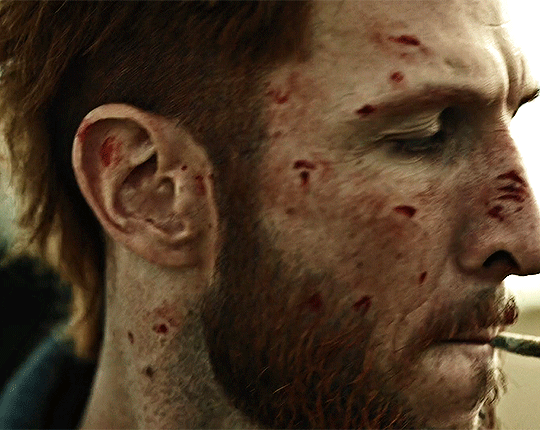


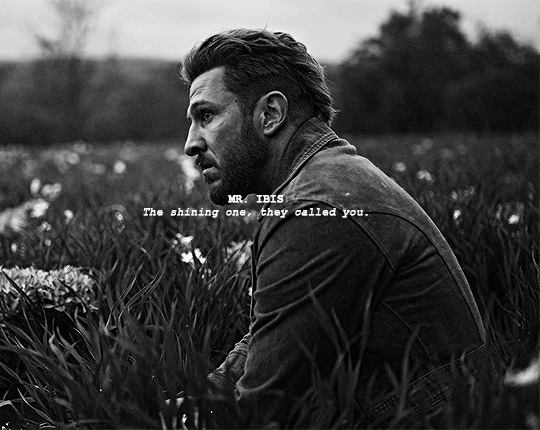

The story I’m writing is about Lugh of the Tuatha dé Danann; the ancient race of gods in Old Ireland. You weren't small.
AMERICAN GODS (2017 - 2021)
#american gods#americangodsedit#madsweeneyedit#mad sweeney#pablo schreiber#tvgifs#filmtv#userstream#the shining one they called you :(#treasure of the sun :(#they made you small :(#did a rewatch of s1 and 2 of this#and sweeney (and laura) are really characters that you could really tell were meant to be their own Main Characters#but that they made sweeney the Old God That Adapted And Changed Over Time#the abuse allegory with wednesday#there was so much dare i say too much
410 notes
·
View notes
Text
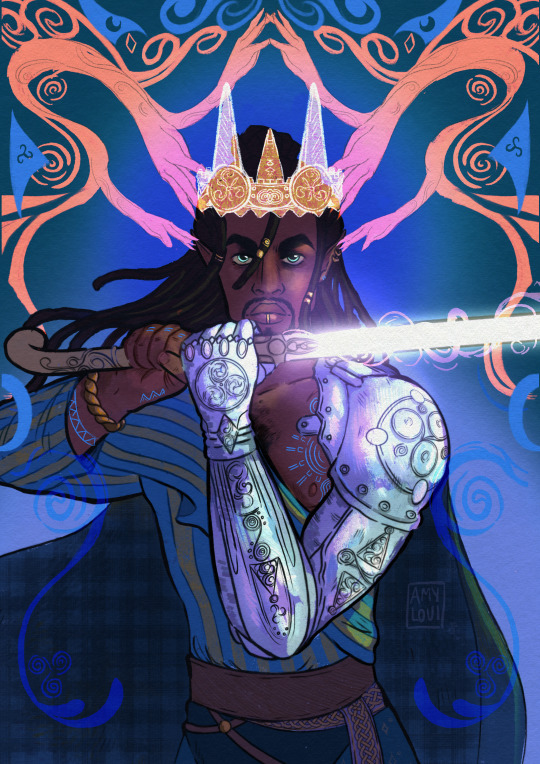
July Postcard, Nuada Airgetlám
King of the Tuatha Dé Danann, husband to Boann, Bres-enabler, Lugh-predecessor and owner of Fragarach, a very cool sword.
If you'd like a postcard, sign-up before the end of the month!
#artists on tumblr#irish mythology#nuada#tuatha de danann#celtic mythology#irish myths#fantasy illustration#original illustration#illustration#my art
320 notes
·
View notes
Text
Faerie Types + Related Creatures:
Sprites: derived from the Latin word "spiritus", a sprite is a type of fae, often described as a tiny humanoid with insect-like wings, unlike nymphs who look like beautiful humans. Size and appearance can vary depending on what they are the sprite of.
Kelpies: water horse spirits found in scottish myth capable of shape shifting. They inhabit the Lochs and pools of Scotland. It is described to look like a horse, but can take a human form. Said to delight in drowning its victims. In certain stories, it loves the human liver.
Pixies: Little folk found in English folklore, especially around Devon and Cornwall. pixies are believed to inhabit ancient underground sites such as stone circles, barrows, dolmens, ringforts, or menhirs. In traditional regional lore, pixies are generally benign, mischievous, short of stature, and childlike; they are fond of dancing and wrestling outdoors, of which they perform through the night.
Changelings: creatures spoken of in many folklore, fantasy, and fairy tales from across European mythology. They are regarded as creatures that are placed into mortal homes by fairies or demons, who proceed to kidnap the original child of the home
Cù Sìth: found in scottish myth, the cú sìth is a hound and harbinger of death. Said to reach sizes as big as a young bull. Its fur is described as shaggy and dark green (sometimes white) in colour. Its tail is either coiled up or braided and its paws are the same width as a man's hand. Shares similarities to the Cwn Annwn
Elves: humanoid beings that originate from Germanic mythology and folklore. In medieval Germanic-speaking cultures, elves generally seem to have been thought of as beings with magical powers and supernatural beauty, ambivalent towards everyday people and capable of either helping or hindering them
Knocker: a helpful spirit of a previous fatality in the tin mines. A knocker is about 2 feet high, has a disproportionately large head, long beard and weathered, wrinkled skin. Their long arms almost touch the ground and they imitate the miner's clothes in dress, and carry such things as pickaxes and lamps. Some believed the knocking on the cave walls caused by knockers were attempts to break down the walls, others that the knocks were directions on where to dig and others still that the knocks were warnings of an impending collapse.
Tuatha dé Dannan: are a supernatural race in Irish mythology. They are thought to represent the main deities of pre-Christian Gaelic Ireland. Prominent members of the Tuath Dé include The Dagda, who seems to have been a chief god; The Morrígan; Lugh; Nuada; Aengus; Brigid; Manannán, a god of the sea; Dian Cecht, a god of healing; and Goibniu, a god of metalsmithing and one of the Trí Dé Dána
Wulver: a humanoid wolf creature that is part of the folklore of the Shetland islands off the coast of Scotland. The wulver kept to itself and was not aggressive if left in peace, and he will often guide lost travellers to nearby towns and villages. There are also tales of Wulvers leaving fish on the windowsills of poor families.
Dwarfs: found primarily in Germanic mythology, dwarves were magical creatures with great skill in metallurgy, making them famous and often the craftsmen for powerful artifacts of legend. They have strong associations with death and the earth (dark hair, pale skin) in mythology, and often dwelled within mountains and mines. Late Norse concepts of dwarves were quite different from the German and Dutch Folklore, where they were unseen magical creatures like fairies and gnomes; users of charms, curses, and deceit.
Boggart: is generally a household spirit turned malevolent trickster or mishcevious goblin-like creature. The name is derived from the Welsh "bwg". When a hobgoblin is teased or misused excessively, it will become a Boggart — creatures whose sole existence is to play tricks and cause trouble for people. They can be mischievous, frightening, and even dangerous, and they are very difficult to get rid of. Boggarts also tend to punish those who offend them and in some cases are trying to punish a human for injustice.
Hobgoblin: a spirit of the hearth, typically appearing in folklore, once considered helpful but since the spread of Christianity has often been considered mischievous.
39 notes
·
View notes
Text
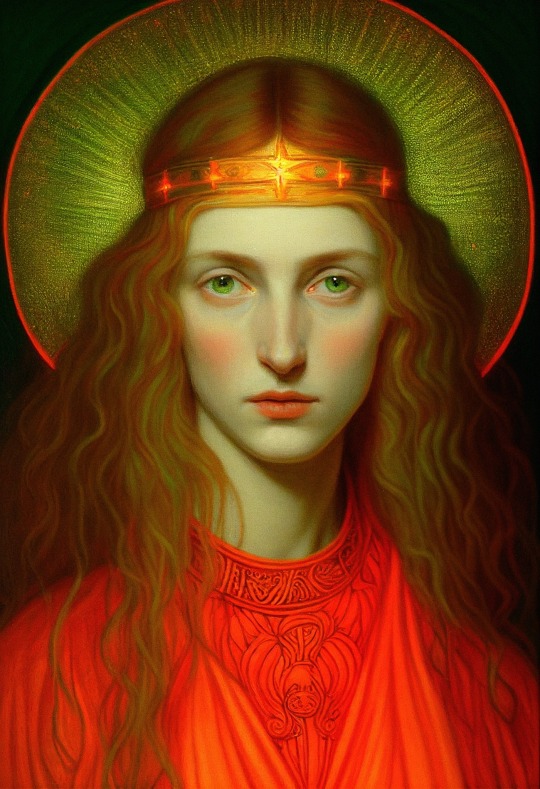
Bridget, Bright Goddess of the Gael
Talon Abraxas
Brigid was a goddess of the Tuatha Dé Danann. She was a daughter of the chief of the gods, The Dagda, and was known as a goddess of healers, poets, smiths, childbirth and inspiration. Her name means "exalted one". This article by Branfionn NicGrioghair explores the story of Brigid and the later Christian Saint, St. Brigid, who is still honoured to this day, especially in Faughart, her birthplace, and Kildare, where she founded a monastery.
Brigid is the Daughter of the Dagda, one of the more universal deities of the pagan Gaelic world. She is known as the Goddess of Healers, Poets, Smiths, Childbirth and Inspiration; Goddess of Fire and Hearth and a patron of warfare or Briga. Her soldiers were called Brigands. Her name means "Exalted One." She is also known as Brigantia, Brid, Bride, Briginda, Brigdu, and Brigit. She is said to lean over every cradle. The lore and customs have continued to this day regarding Brighid, more vividly than all the other Gaelic deities combined.
In the middle ages, Brigid is in many stories. In one she is the wife of Bres, the half-Fomorian ruler of the Tuatha Dé Danann. Their son, Ruadan, wounded the smith god Giobhniu at the second battle of Magh Tuireadh but he himself was slain in the combat. Brigid then went to the battlefield to mourn her son. This was said to be the first caoine (keening), or lament, heard in Ireland. Until recent time, it was a tradition to hire women to caoine at every graveside. In another story, Brighid was the wife of Tuireann and had three sons: Brian, Iuchar and Ircharba. In the tale, The Sons of Tuirean, these three killed the god Cian, father of Lugh Lámhfhada when he was in the form of a pig.
She was transformed by the Church of St. Brigid into St. Brigid about 453 C.E. Saint Brighid is known as the patroness of farm work and cattle, and protector of the household from fire and calamity. To this day, one of her most common names in Gaelic is Muime Chriosd, "Foster-Mother of Christ." St. Brigid was said to be the daughter of Dubthach, a Druid who brought her from Ireland to be raised on the Isle of Iona, sometimes called "The Druid's Isle."
-By Branfionn NicGrioghair
29 notes
·
View notes
Text
Pagan Percy Jackson part 2
Mostly Celtic because that’s what I’m most familiar with.
Lester/Apollo: ms. Jackson as a god a require you and your son’s assistance.
Sally: no
Lester: as a pagan surely you must-
Sally: Celtic.
Lester: What?
Sally: I'm a Celtic pagan. I worship the Tuatha Dé Danann. The Irish gods.
Lester: You had a child with Poseidon.
Sally: And?
————————————————————————
Zeus: so all gods in favor of killing Percy Jackson?
Dagda the chief of the Tuatha Dé Danann:
*Appearing on Olympus* if you kill one of our few worshippers I will personally fuck with the veil so your children have to deal with our problems too.
The Greek gods: so Percy you are allowed to live.
Percy: *bows to Dagda* thank you lord Dagda.
Any requests for your offerings?
Dagda: your usual offerings of your mother's cookies are fine child.
Percy: of course lord Dagda.
The Greek gods: *shocked at Percy showing actual respect to a god.*
————————————————————————-
Meeting Apollo for the first time
Celtic pagan Percy: lord Lugh?
Apollo: lord what now? I am Apollo.
Percy: oh. Lame.
————————————————————————
Annabeth: *bursting into the Jackson apartment* Percy the Norse gods are real too!
Norse pagan Percy: *praying to a Norse deity* no shit.
————————————————————————-
Or what if Sally was a Celtic demigod
Chiron: only children of the gods may enter camp half blood therefore no Percy your mother cannot visit.
Sally Daughter of Brighid the goddess of the hearth, home, and of divination: hello! Want a cookie?
Chiron: WTF
Percy: mom! :D
#pjo#percy jackson#pagan percy#pagan percy jackson#pjo au#percy pjo#percy jackson and the heroes of olympus#percy jackon and the olympians#percy jackson and the olympians#percy jackson and the lightning thief#percy jackson series#pjo stuff#annabeth pjo#pjo text post#pjoverse#pjo hoo toa#pjo series#pjo hoo#pjo hoo toa tsats#rick riordan#riordan books#hoo#toa#lester papadopolous#percy and annabeth#annabeth chase#sally jackson#my ramblings#pjo incorrect quotes
272 notes
·
View notes
Text
Balor - Day 66
Race: Tyrant
Alignment: Dark-Chaos
July 8th, 2024

For how relatively obscure Irish myth can tend to be, it has a surprising amount of influence over contemporary fantasy. If you walked up to someone on the street and asked them who Dagda was, they'd likely never be able to answer, but if you showed them a picture of a Banshee or a Changeling, they'd... probably still not know what you were, and ask you to leave, but whatever. If you went into a D&D party and asked that same question, you'd get many recognized looks and nods of understanding, at least, for what it's worth. As gone over far earlier in this series, during the Dad- ahem. Dagda analysis, Irish mythology is wide and has surprising roots in a lot, especially relating to the main antagonistic force throughout, the Fomorians. And who else leads this roving band of pillagers but today's Demon of the Day, the single-eyed giant, Balor!
While the Fomorians are a demon in their own right within the SMT series (and a personal favorite of mine at that,) the topic of them is unavoidable when it comes to Balor- after all, being the leader of the bunch, the most fearsome of them, and being a star player in the Tuatha Dé Danann as a whole, it's impossible to divorce their leader from, well, them. Balor's name roughly translates to 'The Flashing One,' as purported in Myth, Legend & Romance, a book that goes in-depth into general stories throughout Irish mythology- things such as the Ulster Cycle where Cu Cuchulain originates, or, in the case of Balor, the Mythological Cycle, the book going over the eternal war between the Tuatha Dé Danann and the Fomorians. In the Mythological Cycle (and thankfully looping back to Balor after such a detour), Balor is one of two major leaders of the Fomorians, and one who leads the charge into a battle with the Tuatha Dé Danann.
In the story, Balor is described as a giant monster with a single eye. To quote,
The first was Balor, of the Mighty Blows,
balc-beimnech. A remarkable thing about him was that one of
his eyes, which he generally kept covered, brought instant
death to everyone on whom its gaze fell.
I think that 'of the Mighty Blows' is meant to establish a great stature, especially given the amount of chaos he wreaks later on in the battle itself. As the champion of the Fomorians, and the greatest warrior who led the charge, he played an incredibly important role in getting the Fomorians an advantage, in that he killed Nuada Airgetlám during the first major battle of the war, granting an upset, given that Nuada was the leader of the Tuatha Dé Danann. Later on in the battle, however, Balor was betrayed by his own grandson just as he went to open his eye, intending to bring a swift stop to the fighting- a Tuatha Dé Danann named Lugh, his own grandchild, went to battle with the one-eyed giant, and after some teamwork to forcibly close the destruction the giant's eye was wreaking, Lugh ended up firing a boulder through it, killing Balor. After his defeat, Balor fell backwards, ending up crushing several of his own men.
Hilariously, as the Wikipedia article about Balor says regarding the source of Balor's eyes' power, "O'Curry tantalizingly stated he was in possession of a manuscript with an alternate explanation on how Balor got his power, but does not elaborate due to lack of space." Honestly, kinda tragic. It's commonly believed that Balor's eye's power, mainly depicted in the Cath Maige Tuired (a collective title for two saga texts in the mythological cycle,) originates from an exposure to magic fumes his druidic father, Buarainech, the collective father of all Fomorians as well.
There's also an entire folkloric side to Balor, but I'll leave you to read into that yourself. What I find most interesting about Balor is his apparent role as a representation of the 'Scorching Sun;' Dáithí Ó hÓgáin, a scholar in the field of Irish mythology, purports that the already existing depictions of Balor as the 'scorching sun that would bring crop failure and drought,' to quote the Wikipedia article, likely comes from the physical resemblance between Balor and a Cyclops, giving light to a hitherto unnamed Celtic sun god from the Bronze age. As he speculates, the deity mentioned could be Balor, and his appearance had been conflated with that of the Cyclops, giving way to the strange similarities between Balor, Cyclopses, and a relatively obscure Welsh giant named Ysbaddaden, which is its own can of worms.
In SMT, I find the depiction to be really interesting, and frankly pretty cool- the hairy body may be drawing a connection between Balor and the Fomorians design in SMT, given that Fomorian is depicted as a giant ram. The single eye up above in a cage is a unique design element, and while I'm not sure where the cage came from, I really do enjoy how unique it is- besides, the writhing mass of worms surrounding the single eye makes Balor resemble a Beholder, which gets HUGE ups from me. I LOVE BEHOLDERS!!!! RAHHH!!!!!! In gameplay, from my experience, Balor tends to be a mid-game physical attacker, which fits very well. I kinda wish he would get a signature skill based around his eye, maybe one that's sorta like Mudo? But I digress.
Overall, the Fomorians are a rabbit hole I find utterly fascinating, and Balor is just one example of why that is. Trust me when I say there is a lot more to this- I'm only really scratching the surface- and I'd highly recommend reading more about the Mythological Cycle if you're interested!
#shin megami tensei#smt#megaten#persona#daily#balor#the quality on this one is kinda iffy but tbh i was very stressed while writing this due to a bunch of circumstances#mostly related to the upcoming elections#please vote everyone!!#lesser of two evils everyone!!!!#i digress tho#this one was pretty fun! i love irish mythology and finding out more about it is always a treat
31 notes
·
View notes
Text
Oh now, this is a new experience.
Greetings demigods. I am Lugh, of the Tuatha Dé Dannan. Father of Cú Chulainn and all of the kiddos in Cabin 2.
Feel free to send your prayers my way, I'm always willing to steal adopt some new kids :)

38 notes
·
View notes
Note
Hello! Hope you're doing well, personally I'm very excited for the update! ^^ But I've got a couple questions:
Do fairy people have some innate qualities that humans don't have? Like being physically stronger, or very good eyesight/earing?
Also I'm still a bit confuse by MC and Daonna's supposed resemblance. As of now, Daonna has an established design, so should we just imagine something like a glamour cast on MC that makes it so everyone else sees them as Daonna?
Thank you!
Thank you for your kind words! As the day approaches we get even more stoked! To answer your questions:
The Tuatha Dé Danann do indeed have some special qualities, thanks to their namesake goddess, Danu. Most obvious and notable is their extended life spans, for example, and some Tuatha Dé have innate magical abilities. However, going too far into the details broaches spoiler territory, so for now, we will let you do a little theorizing too ;)
The confusion about the resemblance is understandable! We have not established why you and Daonna look the same narrative-wise; that question will be answered later in the story! As far as the sprite goes, it's a simple answer of budgetary limitations. We needed a sprite to represent Daonna, but can not account for every possible player preference in terms of Daonna/MC's appearance. (We tried to achieve this via our Kickstarter, but ultimately fell short of that stretch goal.) Ultimately we consider Daonna's sprite to be an interpretive appearance for the both of them - meaning, if you would prefer to imagine your MC/Daonna with a different appearance, that's totally fine! Mythological figures are often described in contradictory ways depending on the source (Lugh, for example, is sometimes described as blond, sometimes a redhead), so all interpretations of Daonna/MC's appearance are valid in our eyes. We encourage everyone to just 'theater of the mind' that Daonna looks like your MC, despite the sprite.
That said, we are hoping to implement a little feature to expand the amount of in-game options for Daonna/MC's appearance in a future update. This would not be full customization, but rather the option to select between more than the original default.


#ask#lachesis answers#na daoine maithe#the good people#dating sim#interactive fiction#visual novel#otome
28 notes
·
View notes
Text

And next up, Falinnis and Shalinnis: The Hounds of Lugh.
Hounds of Celtic mythology of the trusted hound of the warrior king Lugh Lámhfhada of the Tuatha Dé Danann. Or more accurately, two separate instances of the story where different names were used.
The original wolves are below, the idea we had was basically great hunters and fighters~


17 notes
·
View notes
Text

Balor, high chief of the Fomorians. Balor was the embodiment of the scorching sun, who brought drought and death to those against him. Balor’s body towered over all who laid eyes on him, with his one eye emanating an abyssal darkness. This eye was said to bring about death whenever it was opened, scorching the earth. Balor prides himself on his ruling of the Fomorians, demons who sought to subjugate the Tuatha dé and humanity. During the Fomorian’s rule over the Tuatha dé, Balor installed a puppet ruler named bres a member of the Tuatha dé whose father was a Fomorian. Under Bres the Tuatha dé and humanity were enslaved. However Balor heard of a prophecy which detailed his fall from the hands of his grandson. To remedy this Balor sent for all of his daughter’s children to be drowned, the only one to survive was Lugh, who faced off against his grandfather in the final battle against the Fomorians. Using his spear, Lugh punched out Balor’s eye, stealing his grandfather’s eye, Lugh used it to decimate the Fomorian army and obtain victory for the Tuatha dé. However Balor still survived and will occasionally return to the mortal world, but he’s always stopped by his grandson, their combat resulting in storms.
Balor’s most common epithet is “Balor of the evil eye” but he has many others, such as “Balor the smiter” and “Balor of the piercing eye”. In modern scholarship it’s believed that Balor was originally a demonic god of the sun, being the incarnation of the harmful effects of the sun’s rays, like burns and droughts. Balor’s battle with Lugh is believed to be reflected in the story of Saint Patrick and Crom Dubh, with Crom Dubh most likely being a reflection of Balor himself. Another being connected to Balor is the fire spirit slayed by Fionn mac Cumhail, who may have been seen as an aspect of Balor. In wales, Balor was reflected in the evil giant Ysbaddaden, who fought King Arthur. Balor’s fight with Lugh comes from a long line of stories that possibly orginated from the myth of Baal’s combat with Yam in Canaan, these stories pervade the religious landscape like the battle between Indra and Vritra, and the Slavic myth of Perun’s rivalry with Veles. All these stories are grouped together under the moniker of Chaoskampf, a battle against the forces of chaos and drought to bring life and fertility to the world.
#art#character design#mythology#creature design#celtic mythology#irish mythology#celtic#irish#balor#fomorian#demon#evil#sun god#fire god#drought god#destruction god
10 notes
·
View notes
Text
The Spear of Assal / アッサルの槍, Areadbhar / アラドヴァル, and Lúin / ルーン
The Spear of Assal (JP: アッサルの槍; rōmaji: assaru no yari) is a sacred lance tied to the Crest of Cichol. According to the Lebor Gabála Érenn—a collection of texts telling the supposed history of Ireland—the Spear of Assal, or Gáe Assail in Irish, was the spear of Lugh, the god of light. As recompense for the killing of Lug[h]'s father Cian, Tuirill Biccreo and his sons Brian, Iuchar and Iucharba were tasked with the recovery of seven mythical items, one of which being the Spear of Assal. The book describes the spear as being ridged and red-gold in appearance. It is said that the spear craves to spill blood; who's blood is irrelevant. When the spear's wielder utters ibar "yew," as they throw it, it always strikes true; when athibar "re-yew" or "return-yew" is said, the spear would return to the caster.
Areadbhar (JP: アラドヴァル; rōmaji: aradovaru) is the Hero's Relic tied to the Crest of Blaiddyd, inherited by the royal family of the Holy Kingdom of Faerghus. According to the Irish tale The Tragedy of the Sons of Tuireann, Areadbha[i]r—rendered in Japanese the same as in Three Houses or as アーラーワル (rōmaji: ārāwaru)—was the lance of Lugh. In the story, Areadbha[i]r was one of eight mystical items needed to be attained by Brian, Iucha[i]r and Iucharba as recompense for the killing of Lugh's father Cian. Sound familiar? Areadbha[i]r originally belonged to Pisear, the king of Persia; it was a powerful and poisonous spear of yew that must keep its point submerged in a vat of water as to prevent it's heat from setting the king's court ablaze. When the sons of Tuireann were denied Areadbha[i]r in exchange for a half-baked poem from Brian, the three brothers slaughtered Pisear and all the men of his court. Appropriately, the name Areadbha[i]r is supposed to mean "Slaughterer". Ultimately, the the lance's name in Three Houses is likely tied to House Blaiddyd due one of the kings of Faerghus was named Loog, a corruption of Lug[h].
Atrocity is the combat art tied to Areadbhar. Both the English name and the original Japanese 無惨 (rōmaji: muzan) "cruel; merciless" is likely derived from the meaning of Areadbha[i]r and the brutality it is easily capable. Additionally, the Japanese name is also a word used in Buddhism meaning "to commit sin without shame," matching the disposition of Dimitri after the timeskip.
Lúin (JP: ルーン; rōmaji: rūn) is the fiery Hero's Relic tied to the Crest of Daphnel, passed down through the generations of House Daphnel and later House Galatea. In Irish mythology and folklore, Lúin of Celtchar is a long, fiery spear carried by Celtchar mac Uthechar, though it was occassionally lent to other warriors. Between the stories The Destruction of the Hostel of Da Derga and The Intoxication of the Ulstermen, a thorough description of the spear has been provided. Lúin is a massive lance, the shaft of the spear alone considered a task for a team of oxen to pull. It had a fiery speartip that would set the yew shaft and its wielder ablaze if not dunked in a large cauldron of black venom made from "the blood of dogs and cats and druids." Where have we seen that before? It is explained that the Lúin was found on the battlefields of Mag Tuired where the battle between the mythical Fomorians and the Tuatha Dé Danann took place. It was this battle in which Lugh made use of all the artifacts collected by the sons of Tuireann and swiftly defeated the Fomorians. With all the apparent similarities, it is all but confirmed that Lúin of Celtchar is one and the same as Areadbhar, which is one and the same as the Gae Assail. The name simply changed with the passage of time; Areadbha[i]r is the most recent name, only appearing in text written after the Christianization of Ireland.
The name of Lúin's combat art is also loosely derived from the weapon that inspired it. Burning Quake clearly alludes to the fire attributes of the lance, but where does the quake come from? In Japanese, Burning Quake is similarly called 震炎 (rōmaji:shinen), meaning "Shaking/Quaking Fire." The name likely is based on a behavior that occurs when the spear gets hot, in which it begins vibrating; note that in Japanese, the word for vibrate uses the same kanji 震 from Burning Quake. This is interpreted as a sign of approaching battle. Upon the wielder striking the aft-end of the spear three times during this state, the spearhead would burst with large sparks of flame, compared to the size of an egg or a "sack-measure" depending on the source. The name may also be intended to resemble the word 支燃性 (rōmaji:shinensei), meaning "combustibility" in relation to the lance's fiery properties.
This was a segment from a larger document reviewing the name of most every weapon and item in Three Houses and Three Hopes. Click Here to read it in full.
9 notes
·
View notes
Note
I have been trying to find an answer online but I can't quite find what I'm looking for, if you don't mind can you help provide some insight?
Basically my question is did the medival people of Ireland honest to god believe in pseudo historical texts like the Book of invasions and related traditions. Like they believed in 6 waves of people coming to ireland under Christian cosmology.
Or was this more of a literary tradition for generally understood to be fictional or not quite accurate stories?
So it's been. Months. But if it's any consolation, this DID thoroughly haunt me!
I also cleared it with a colleague of mine who does work on like. Medieval Irish conceptions of history, so it's been vetted by Someone Who Is Not Me, at least the rough outline (I am NOT showing them my Tumblr, god forbid.)
And...for the most part? Yeah. They did. They sometimes argued FIERCELY over little details, like the Tuatha Dé coming in a cloud of mist or whether or not they burned their ships, or whether they were doing it to get away from Lugh. They cited texts that they thought were particularly authoritative, like the Holiest of the Holies, the now-lost Cín Domma Snechtai, they refuted other scribe's suggestions, sometimes very aggressively. I mean, you have scholars into the 20th century believing in this, at least to some extent or another, like Eoin MacNeill in his Phases of Irish History (1919) or T.F. O'Rahilly in his Early Irish History and Mythology (1946). Obviously not in terms of like. The Tuatha Dé as a supernatural race of people, but in the sense of what might best be described as extreme euhemerization, using these medieval texts as a way of trying to unveil a lost Irish pre-history. (It goes without saying this is NOT my approach and not how most of us approach the field, but it was quite common decades ago.)
Geoffrey Keating, in the 17th century, would write his History of Ireland, which used LGE as one of its key pieces of evidence in his attempt to hit back against less than savory accounts by anglophone scholars, of Irish history. "LOOK at our history, LOOK at our glorious past, LOOK at what we can do." It's imminently sympathetic, honestly. (Though Geoffrey shouldn't be taken to be credulous -- he explicitly says that Cath Fínntragha, for example, was not to be taken as a true historical account.) There's a bit, perhaps slightly amusing by modern standards, in his prologue where he says, "Cambrensis [Gerald of Wales], who undertook to give a correct account of everything, appears to have received a medley of fables from some dunce or blind man, for he has said nothing of the conquest of the Tuatha-De-Dananns, who possessed Ireland one hundred and ninety-seven years, during which time nine kings of their nation rules the island."
This is a man who does, firmly, believe in what he's saying and in the veracity of the sources that he has. We also see LGE and the pseudohistorical scheme in general being adopted by Keating's contemporaries, such as Dubhaltach mac Fhirbhisigh (Leabhar na nGenealach) and Roderic O'Flaherty (Ogygia), some of the best scholars of their day and men who...this is my bias speaking, but I trust them. Especially Dubhaltach. I don't have my copy to hand, but the way he speaks about his sources, the way that he's willing to argue with them even as he includes them in his work...I believe him. Or. Let me rephrase that. I believe that HE believed in what he was saying, and I believe in his integrity as a scholar. They're men who absolutely have an angle! But they're men who are using the sources that they have to defend their country from some truly awful slander using the best materials they have at the time, as methodically as possible.
Charles O'Conor, one of the, in my opinion, crucially overlooked scholars of the 18th century, a man who the field owes a massive debt to for his activism and his large collection of manuscripts (some of which, through a story I'll tell sometime if anyone's interested, become the Stowe Collection), was skeptical, saying that Keating's work, "Is a most injudicious Collection; the historical part is degraded by the fabulous, with which it abounds. Keating was one of those laborious Readers, who, in making Extracts, do it without Selection or Discernment; and suchWorks (as the judicious Mac-Firbis observes -- ought never to be published." Personally, while I appreciate boosting Dubhaltach and his work, I think he's too harsh on Keating. It's very easy to judge someone's scholarship when you're living a century ahead of them. He is much more skeptical than Keating, trying to compare native sources up against other contemporary histories of Europe, but he DOES still use LGE as a vital source -- he doesn't discount it or its invasion scheme entirely. He is still very much treating it as a historical document, albeit one that he doesn't fully believe in. (Especially since he's kind of fighting with James MacPherson, of Ossian fame. Because apparently getting into massive public debates with people whose work is enjoying a lot of popularity and that we think involves shoddy research is a time honored tradition in the field.)
But there is a reason why it gets picked up, even into the 20th century, because when you've had your history continually belittled and marginalized, when your language has been driven to the point of near extinction, when you are constantly told that you don't HAVE anything worth being proud of, not compared to the Grand History of England or the classical tradition, that you're a nation of barbarians and beggars...of course you want to believe in it. Of course you want to believe that you can salvage SOMETHING. Especially since these are your ancestors saying it. Your ancestors, reaching across this seemingly insurmountable chasm of time, telling you "look, this is your history." Do I think everyone in medieval Ireland agreed with it? Probably not. There was probably at least one person who was like "well...do we KNOW, though?" In the same way as there were very likely people who thought "King Arthur...did he exist?" Or those oddballs in the modern day who claim the Roman Empire didn't exist. There are always going to be people who are a little skeptical, even of what are the generally accepted truths of a certain time period, but I would say that in general? The trend we see is broad belief, because this is the best historical source that people had for centuries -- they had no reason to strongly doubt it, even if they argued over the details.
#geoffrey keating#charles o'conor#dubhaltach mac fhirbhisigh#the mythological cycle#lebor gabála érenn#irish mythology
40 notes
·
View notes
Text

The arrival of Lugh to the court of the Tuatha Dé Danann 💫
(This is my November postcard! If you’d like to be sent one, you can sign up here)
#irish mythology#artists on tumblr#illustration#amylouioc art#celtic mythology#fantasy illustration#lugh#nuada#tuatha de danann#celtic polytheism#praying the fidchell historians don’t kill me#The Coming of Lugh
119 notes
·
View notes